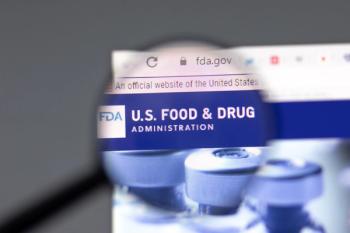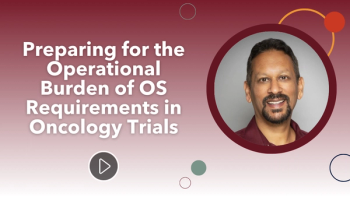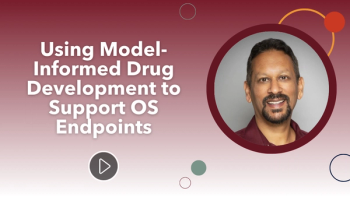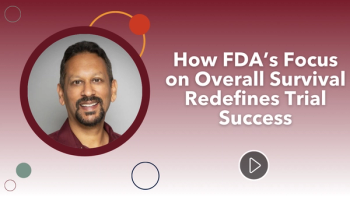
Rare Disease and Orphan Drugs: Regulatory Decisions
There are 7,000 rare diseases affecting approximately 350 million people around the world.
There are 7,000 rare diseases affecting approximately 350 million people around the world.
There are 7,000 rare diseases affecting approximately 350 million people around the world. Of those 7,000, only 450 rare diseases have identified treatments. Eighty percent of rare diseases are of genetic origin and approximately 75% of the patients affected are children. Regulatory definitions of rare disease vary. For example, the EMA categorizes a rare disease as occurring in not more than 5 out of 10,000 people, while in the United States it is in less than 200,000, and Japan less than 50,000.
On the healthcare front, it takes an average of seven years in the United States to get a correct diagnosis for a rare disease and that is after an average of seeing up to eight doctors—four in primary care and four specialists—and receiving two or three misdiagnoses. In the UK, that identification period is five years.1
With all of the challenges that come along with a rare disease—small and dispersed patient populations, lack of expert clinicians, and a small pool of available medical information or data—it is a high growth area. The global orphan drug market is expected grow at a compound annual rate of 5.67% over the period 2013-2018.
The Tufts Center for the Study of Drug Development recently released its report on orphan drugs and found 86 orphan drugs were approved in the United States between 2000 and 2013, up from 65 in the years 1983 to 2000. In Europe, for those same time periods, the numbers
In an
Regulatory Concerns
At the DIA annual meeting in June, the regulatory challenges of orphan drugs were presented. Currently, only four countries do not have an orphan drug designation—Russia, India, Canada, and Turkey, however Canada is supposed to be very close to unveiling its rules there.
In the EU, there is a 70% success rate with orphan drug designations, and the companies are allowed to re-submit. It was also noted by presenter Emer Cooke, Head of International Affairs, EMA, that more companies are taking advantage of protocol assistance and scientific advice from the EMA—from 67 in 2001 to 474 in 2013. Cooke explained one reason for taking advantage of the protocol assistance is that smaller companies are usually the ones developing drugs in this space, so while they are very high on the scale of subject matter expertise, they are very low with regulatory process familiarity.
Cooke described the international collaboration to harmonize orphan drugs as a challenge and opportunity. The US, Japan, and Europe have similar legislations and processes in place with similar criteria to grant orphan drug designation, and they all operate on this designation process with open incentives for development and investment. However, to date, the collaborations between countries are spotty. A joint application form for the FDA and EU was introduced in 2008 for parallel submissions. And there have ben annual joint workshops in place since 2011.
Since 2010, translation into English of relevant Japanese legislation and supporting guidance documents has been in place, as well as each agency providing links to the others relevant webpage. And there has been a progressive increase in parallel—as well as triple “parallel”—submissions.
Australia recently asked EMA to share its assessments of orphan medicines in that project launched in April of this year.
Vann Parker, Principal Consultant for Parexel, presented on the Role of Orphan Drug Legislation in Emerging Markets, who offered that in Asia, only Taiwan and Korea have formal procedures in place, while China does offer some advantages including priority review and trial use for reimbursement, but India offers no incentives or procedures. Other Asian countries allowing for expedited review without a formal program include Indonesia, Malaysia, Philippines, Thailand, Hong Kong, and Singapore.
In Central and South American countries, Brazil, Mexico, Argentina, Chile, and Peru all offer some kind of legislation and procedure, though not as detailed as the US, EU, Japan programs.
Similar situations exist among the MENA countries and Commonwealth of Independent States, with Russia developing legislation, and all others having options.
But what is recommended by EMA’s Cooke about sponsors seeking regulatory input, is true for sponsors who are conducting trials in this space. Abraham Abuchowski, CEO for Prolong Pharmaceuticals, which is developing a therapy for sickle cell anemia, stressed that sponsors have to have a discussion with FDA early on.
The Volt paper also made its recommendations for what should be undertaken with regulators from the beginning of their development program.
- Medical plausibility from the clinical data for the expected treatment benefit
- Patient recruitment strategies supported by rare disease physician networks and patient advocacy groups
- Use of placebo in subjects facing severely reduced life expectancies
- Outcome measures, identified biomarkers of natural disease progression, endpoints, study durations linked to the decline in patients
- Appropriate choice of adaptive study designs, if allowed by the sample size and statistics, to shorten development time and cost
- Risk Evaluation and Mitigation Strategies for the orphan medicinal product
- Stable formulation and sufficient supply for the duration of orphan drug testing
Payers
While drugs for rare diseases are attractive to sponsors for the exclusivity and other incentives, it is clear that orphan drugs are expensive. Kalydeco from Vertex works in 4% of cystic fibrosis patients and costs $373,000 a year. NPS Pharma’s Gattex, approved by the FDA in 2012 for a rare bowel condition costs $295,000 a year. Even Solvadi, which cures Hepatitis C in 80% of patients and by no means is a rare disease, costs $84,000 for a 12-week treatment, or $1,000 a pill. Gilead is coming under fire from all corners on the prices of that drug, mostly from Congress and state Medicaid committees, but brings into question what payers will pay for. Is it cheaper for a health plan and insurer to pay the large price of a drug upfront to cure or manage a disease vs. the long-term costs or effects of a disease on an individual?
For that question, in the EU, Health Technology Assessments bodies or HTA’s, advise on medicines that can be paid for or reimbursed by the healthcare system. In Cooke’s talk, he emphasized a greater emphasis on joint EMA and HTA advice occurring 30% in the orphan drug space. This balances the risk-benefit assessment direction of the regulators, with the relative effectiveness of a medicine and, in some cases, the financial costs to its specific national legislation that the HTA decides. Of course, in the UK, NICE determines which drugs and treatments its single-payer healthcare provider, the National Healthcare System, will provide.
In the United States, drug availability is by health plan and formulary decisions. But more and more pharmaceutical companies have determined that all drugs, not just rare diseases, benefit from additional comparative effectiveness information. And they are developing that in to response to what payers will be and are asking for from drug effectiveness.
And in fact, the Tufts report also found fewer denials of orphan drug coverage by U.S. payers than its European counterparts.
However, the flip side of that coin is cost affecting patient adherence or access. The Tufts report did find post-market challenges with orphan drugs, the major one being patient access based on cost. Higher cost sharing or drugs that have high out-of-pocket expenses lead to medication non-compliance, according to Joshua Cohen, Assistant Professor at Tufts CSDD, who conducted the analysis. An article that examined the cost-sharing requirements against discontinuation and non-adherence for patients with chronic myeloid leukemia taking imitanib (Gleevec) or other drugs in its class, tykinase receptor inhibitors, seems to bear this observation out. The authors found a 70% more likelihood of a person discontinuing or not complying with their therapy if they had higher out-of-pocket costs. The problem is that these TKIs are a very successful treatment and non-compliance leads to progression and either the need for more expensive stem cell transplantation or death.2
“If you’re talking about the orphan drug space, these patients have no other treatments to go to, they are devoid of anything, so the outcomes for that kind of a study can be different. The outcomes are much clearer because any positive effect is better because they have nothing,” said Abuchowski.
You can look for more at the
References
1 Kathleen Wyrwich, PhD, Senior Research Leader, Evidera, in Methods for Patient-Centered Endpoint Selection in Rare Disease Drug Development Programs webinar at
2 Cost Sharing and Adherence to Tyrosine Kinase Inhibitors for Patients With Chronic Myeloid Leukemia
Newsletter
Stay current in clinical research with Applied Clinical Trials, providing expert insights, regulatory updates, and practical strategies for successful clinical trial design and execution.






.png)



.png)



.png)
.png)
